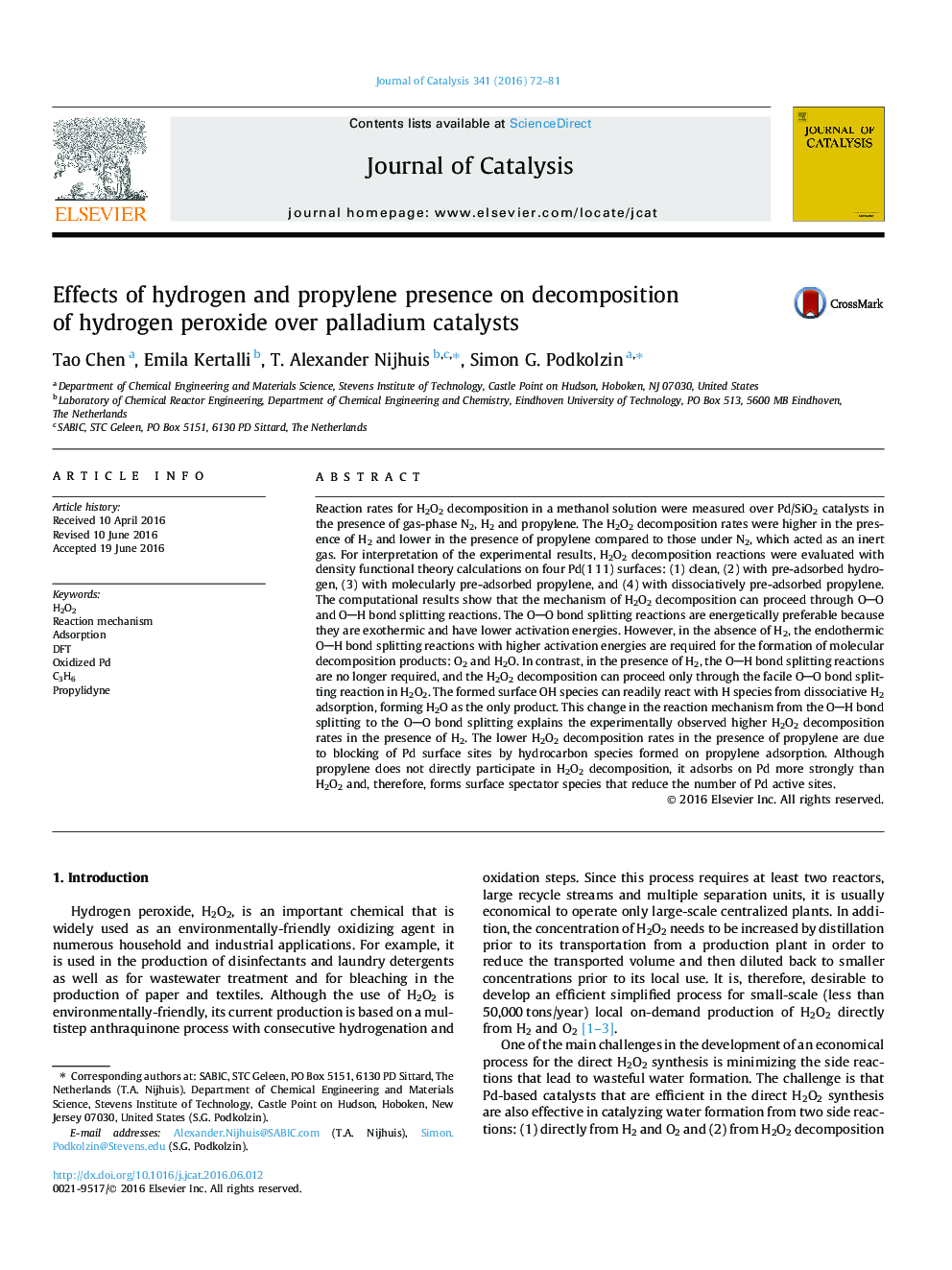| Article ID | Journal | Published Year | Pages | File Type |
|---|---|---|---|---|
| 60488 | Journal of Catalysis | 2016 | 10 Pages |
•H2O2 decomposition rates over Pd/SiO2 catalysts are higher in the presence of H2.•The effect of H2 presence is attributed to a change in the reaction mechanism.•The mechanism changes from O-H to more facile O-O bond splitting in H2O2.•H2O2 decomposition rates are lower in the presence of C3H6.•The effect of C3H6 presence is attributed to hydrocarbon spectator species on Pd.
Reaction rates for H2O2 decomposition in a methanol solution were measured over Pd/SiO2 catalysts in the presence of gas-phase N2, H2 and propylene. The H2O2 decomposition rates were higher in the presence of H2 and lower in the presence of propylene compared to those under N2, which acted as an inert gas. For interpretation of the experimental results, H2O2 decomposition reactions were evaluated with density functional theory calculations on four Pd(1 1 1) surfaces: (1) clean, (2) with pre-adsorbed hydrogen, (3) with molecularly pre-adsorbed propylene, and (4) with dissociatively pre-adsorbed propylene. The computational results show that the mechanism of H2O2 decomposition can proceed through OO and OH bond splitting reactions. The OO bond splitting reactions are energetically preferable because they are exothermic and have lower activation energies. However, in the absence of H2, the endothermic OH bond splitting reactions with higher activation energies are required for the formation of molecular decomposition products: O2 and H2O. In contrast, in the presence of H2, the OH bond splitting reactions are no longer required, and the H2O2 decomposition can proceed only through the facile OO bond splitting reaction in H2O2. The formed surface OH species can readily react with H species from dissociative H2 adsorption, forming H2O as the only product. This change in the reaction mechanism from the OH bond splitting to the OO bond splitting explains the experimentally observed higher H2O2 decomposition rates in the presence of H2. The lower H2O2 decomposition rates in the presence of propylene are due to blocking of Pd surface sites by hydrocarbon species formed on propylene adsorption. Although propylene does not directly participate in H2O2 decomposition, it adsorbs on Pd more strongly than H2O2 and, therefore, forms surface spectator species that reduce the number of Pd active sites.
Graphical abstractFigure optionsDownload full-size imageDownload high-quality image (181 K)Download as PowerPoint slide
